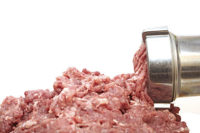Since even the very best establishment can have isolated contamination, the increased sampling may result in positive E. coli O157:H7 findings. If there is a positive finding, FSIS will consider whether a recall of all product implicated by the sample is appropriate, including product shipped to other locations.
In the case of third-party testing, FSIS will use the criteria in Directive 10,000.1 to determine whether the positive E. coli O157:H7 result is valid. If so, a recall could occur. This year there has already been one recall based on a customer’s downstream test and another based on a state’s test of product reground at retail.
Accordingly, establishments selling raw ground beef should take action now to minimize the scope of product potentially implicated by such samples; in addition to all the steps they are currently taking to minimize the presence of the pathogen.
In determining product implicated, FSIS looks to: common source (same lot of raw materials used in a positive batch that were also used in other batches) and cross-contamination (contamination of product contact surfaces). To limit product implicated, the establishment should control use of raw materials and develop support to subdivide a production day.
On control of raw materials, the focus should be on minimizing the number of lots in each batch that are covered by different certificates of analysis. In addition to minimizing the numbers of batches a lot is used in, care should be taken to avoid carrying over combos from the lot of raw material (or rework) to the next day. One note, if the raw material has been treated with a validated antimicrobial, such as boneless lean beef from trimmings, use of these raw materials in multiple batches does not automatically link the batches.
To subdivide the production day so that the time period is less than clean-up to clean-up, FSIS requires “microbiological independence between lots.” The best way to support independence is to conduct robust finished raw ground beef testing (samples drawn every 15-30 minutes, compositing into 1-2 hour lots). If routine robust sampling is not viable, an establishment may still be able to generate data to permit the microbiological independence of batches.
Since 2002, various scientific publications and journals, such as Microorganisms in Food 7, have discussed the “comet effect;” that E. coli O157:H7 contamination will clean itself out of a grinder. Newer studies awaiting publication further support the comet effect. Although FSIS has recognized the comet effect, FSIS will soon require in-plant data to support the application of the comet effect to an establishment’s particular grinding system; specifically, that the system will clean out contamination.
This data gathering need not be excessively onerous. Together with a laboratory, the establishment can conduct a simple study. First, take raw materials and inoculate with a marker (askFSIS lists recognized surrogates). Run the inoculated raw materials through the system followed by normal raw materials. By robustly testing the finished product, an establishment would be able to determine, in terms of production, how long it took to totally clear the contamination from the system. This data would be used to demonstrate when the system would clean itself out, thereby establishing a buffer around any batch testing positive in a third-party test.
We predict more, not less, third-party testing of raw ground beef. The prudent establishment would take action to minimize the product implicated.








Report Abusive Comment